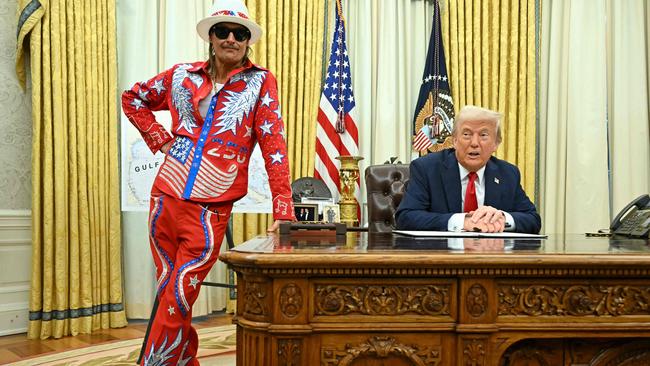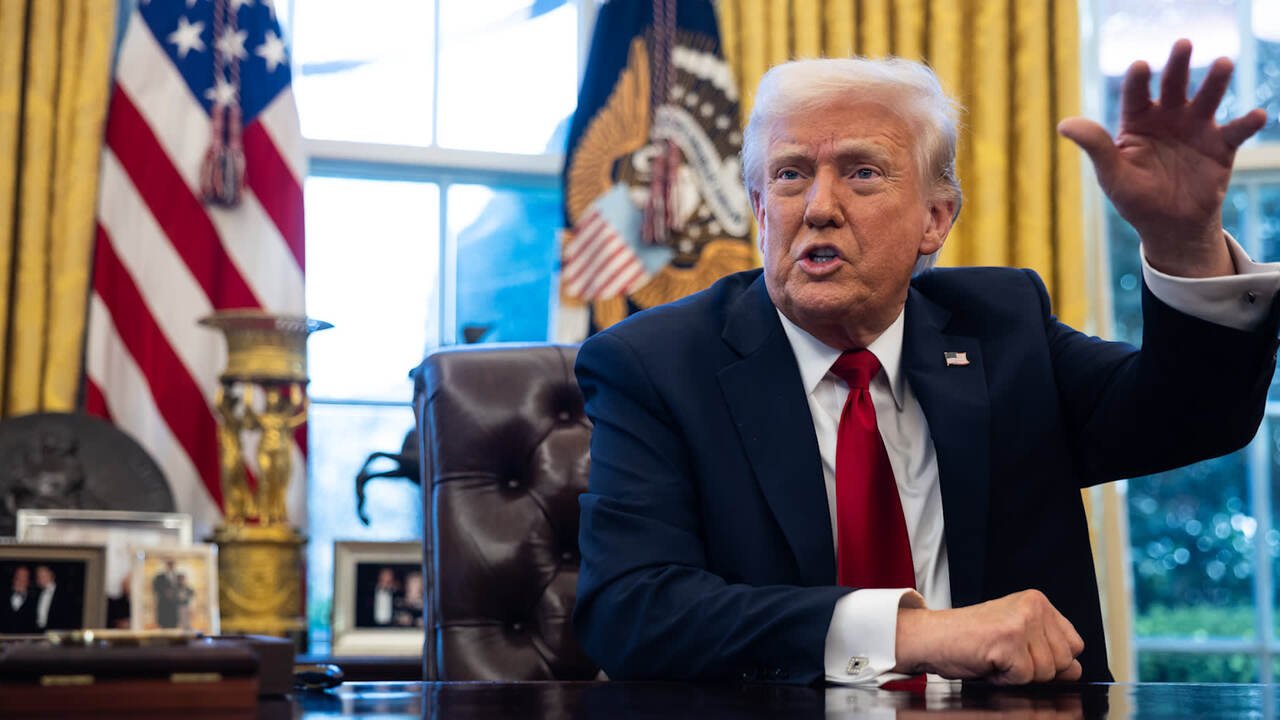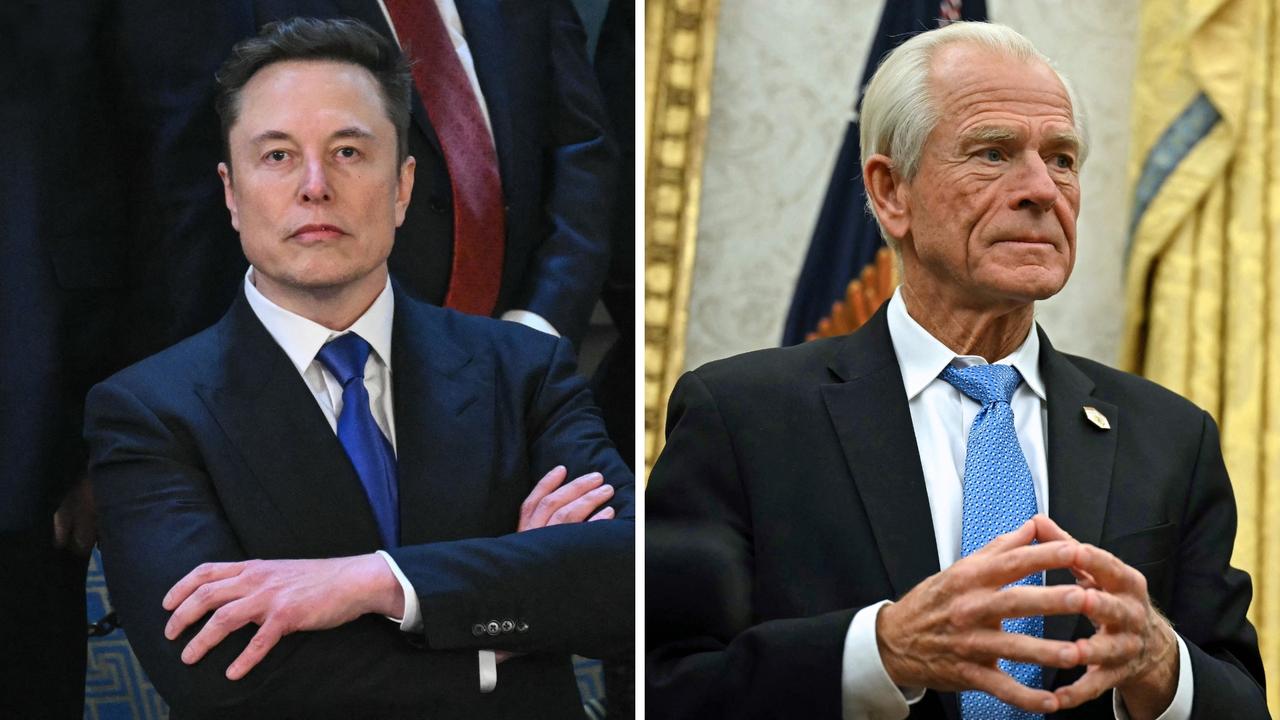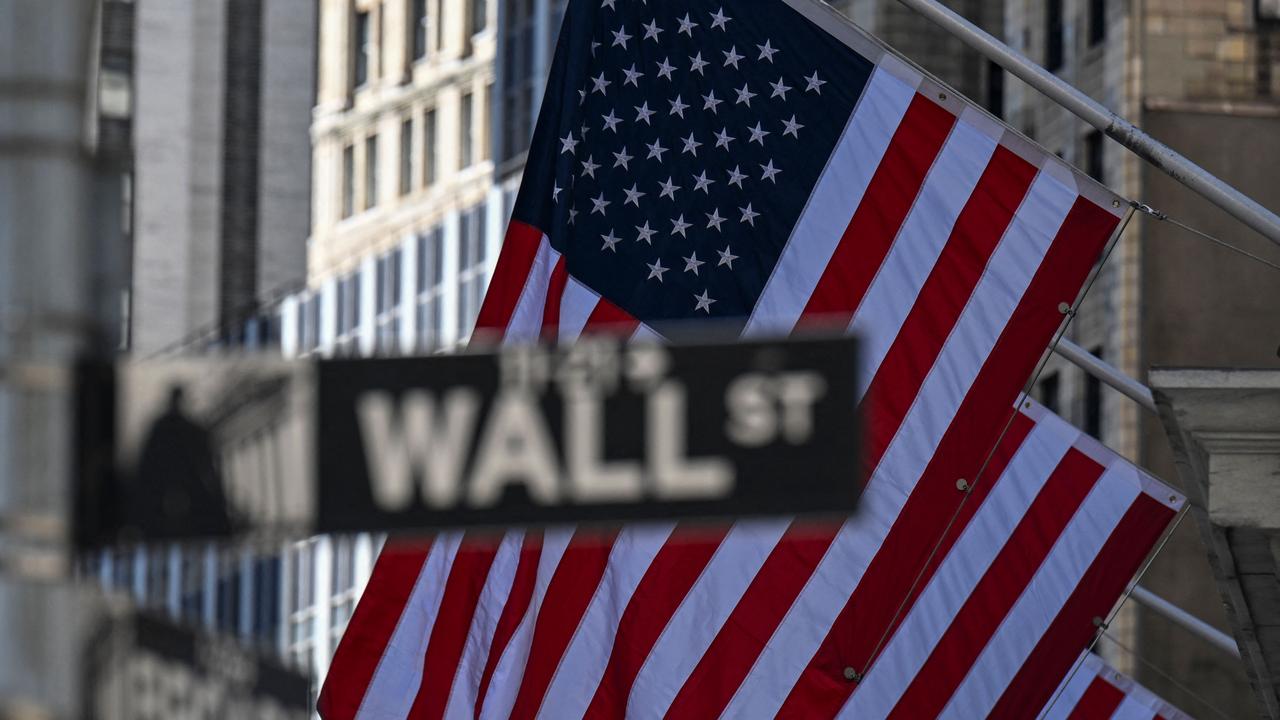Trump has settled on ‘Liberation Day’ tariff plan but won’t reveal it
The White House economic team has struggled to coalesce around a remade US trade strategy, with some aides under the impression that Donald Trump hasn’t committed to a particular path.

Donald Trump has said he had settled on a plan for his latest batch of tariffs expected this week but didn’t reveal what he had decided, after his economic team struggled to coalesce around a remade US trade strategy.
“I’ve settled, yeah,” Trump said in the Oval Office on Monday evening (local time) when asked whether he has decided on his “Liberation Day” plans, a term the president has used for tariffs to be announced by the self-imposed deadline of Wednesday.
Trump’s team has pitched him on several ideas of how to tariff other countries, including a 20 per cent global tariff on virtually all imports. Throughout Monday, some of his aides were under the impression that he hadn’t committed to a particular path, according to people familiar with the matter. The people stressed that conversations remain fluid, and Trump’s comments that he had decided on an approach caught some White House advisers off guard.
The debate behind closed doors highlighted the conflicting priorities of the president. The biggest one: He wants to both raise revenue with tariffs and use them as leverage to get other nations to lower their own duties, or make other policy changes. But if tariffs are subject to negotiation, and could be lowered over time, that would raise doubts about how much revenue could ultimately be expected from their imposition. And while his team doesn’t want to seem as though they are backing down from Trump’s campaign promises, some aides are concerned about the effect tariffs could have on prices.
All eyes will be on what Trump has decided: whether to apply a universal tariff, of up to 20% on all imports, to virtually all US trade partners, or levy individual tariff rates for all countries that could be subject to negotiation – the so-called reciprocal tariff approach.

“A universal rate would be more in alignment with trying to rebalance the global trade deficit question and … even give a nod to using [tariffs] for revenue,” said Everett Eissenstat, former deputy director of the National Economic Council in Trump’s first term. But he added that the reciprocal approach “would be more aligned with trying to alleviate unfair trading practices country by country.” In recent days, some advisers thought he was leaning toward the universal option, and had discussed a plan this weekend with a 20% across-the-board rate. But another top aide said on Monday afternoon he had a meeting with his team, and asked for more information.
Trump had backed an across-the-board tariff on the campaign trail before publicly pivoting to a country-by-country approach over the past month. In the final hours before the April 2 deadline, competing factions have been vying to convince him that their preferred approach is better for an “America-first” trade policy.
The president and his aides have said tariffs would be used to bring manufacturing back to the US, as well as raise revenue to offset the renewal of Trump’s signature tax cuts. White House adviser Peter Navarro, a supporter of universal tariffs, recently said that tariffs could raise $600 billion a year, which could be used to lower income taxes.
At the same time, Trump and his allies have said that tariffs can also be used as a negotiating tool: leverage to get other nations to lower their own duties, or make non-trade policy changes, such as combating migration and drug trafficking. National Economic Council director Kevin Hassett has been a key proponent of the reciprocal, country-by-country tariff plan, The Wall Street Journal has reported.
Those sets of goals can be contradictory, however, leading to a divide in the administration in recent days over how to proceed.
If reciprocal tariffs are subject to negotiation, it could also mean global companies are less likely to push new investments into the US, since they would have less certainty the duties would be in place over the long term.

Conversely, setting a long-term, flat tariff rate could lower the incentive for governments to negotiate with the US on trade, tax and regulatory policies.
The administration publicly insists it can raise revenue and use tariffs as a negotiating tool at the same time. Even if some tariffs are in place permanently, as universal-tariff supporters envision, Trump has still been eager to impose additional tariffs on individual industries and countries. That was the plan he pitched on the campaign trail: an across-the-board levy of up to 20% on nearly all nations, plus higher tariffs on specific industries and adversarial countries such as China.
One government official in Canada said there is hope that if the administration imposes a universal tariff, they may be able to negotiate down some other duties such as the 25% levies that Trump has threatened on Canada and Mexico for what he has said is related to the drug trade from those countries. The official said that Canada is nonetheless bracing for Trump to take a maximalist approach Wednesday, when Trump is planning an event at the Rose Garden to unveil his plans.
The Coalition for a Prosperous America, a protectionist advocacy group whose former chief executive is now associate director for economic policy at the Office of Management and Budget, has long championed an across-the-board levy. The group has pushed analysis to the administration in recent weeks touting how much revenue a universal tariff will raise, and argue it is the best way to ensure companies re-shore manufacturing to the US
“A reciprocal tariff strategy that prioritises foreign countries lowering their trade barriers and market access is directly counter to President Trump’s goals of increasing domestic production and raising revenue to pay for pro-working class policies like no tax on tips,” said Nick Iacovella, executive vice president at the Coalition for a Prosperous America. Universal tariffs, combined with ones placed on sectors, would create a predictable business environment, he added.
Hassett, who was an outspoken tariff critic before joining Trump’s second administration, has been a leading proponent of a negotiable, reciprocal tariff plan behind the scenes. He has said on television that a number of nations have already approached the administration, offering to lower their tariffs in exchange for lenience from Trump on April 2. The hope of tariff sceptics in Trump’s orbit is that kicking off bilateral negotiations over US tariff rates could result in global tariffs eventually going lower over time.
Under a reciprocal tariff system, instead of a universal one, Trump “might very well create a system where tariffs are lowered, not raised,” said Stephen Moore, a first-term Trump senior economic adviser and tariff sceptic.
A middle-ground approach could include targeting a swath of countries with lower duties, while singling out a subset for higher rates, which could be individualised or imposed as a group. The administration previously considered plans for three tiers of tariffs – low, medium and high – before abandoning that plan in favour of individualised rates.
Dow Jones



To join the conversation, please log in. Don't have an account? Register
Join the conversation, you are commenting as Logout